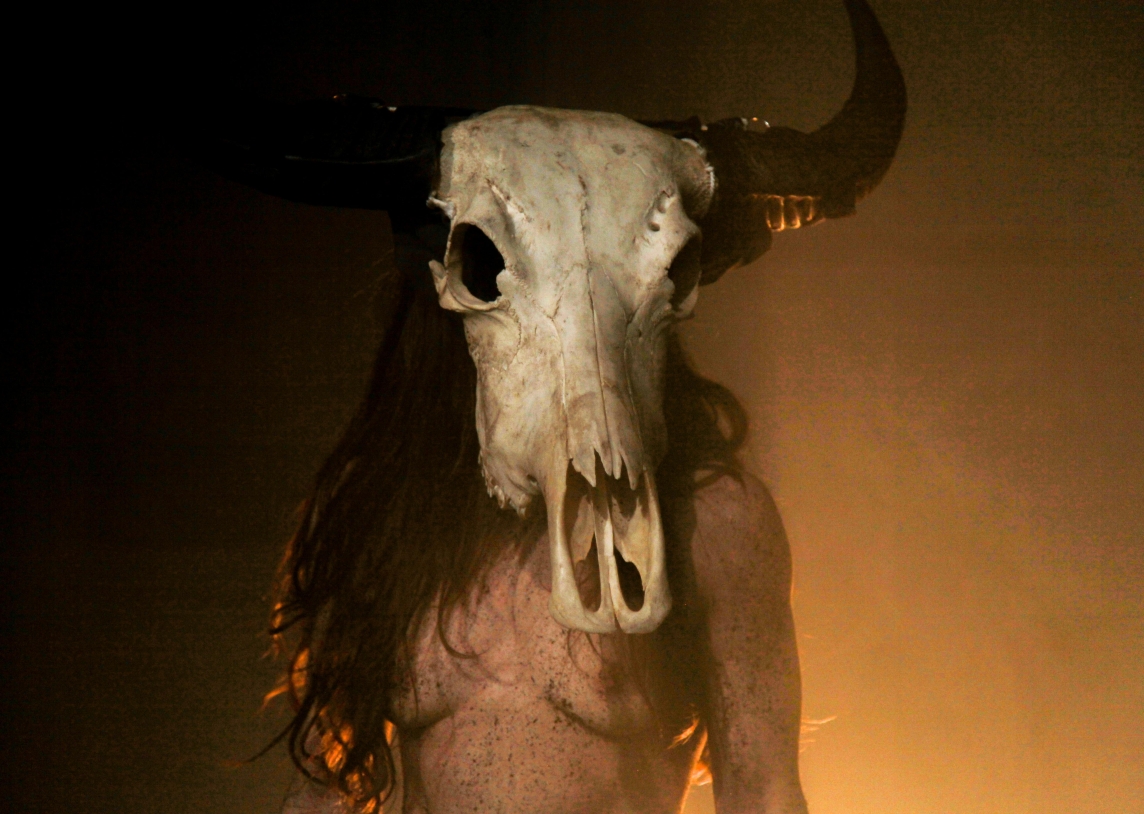- Scotland
- Content
News
Dreams of the Small Gods
Dreams of the Small Gods
Summerhall, Demonstration Room
3 – 28 August, 7.50pm
by Gareth K Vile
Dreams of the Small Gods tells the story of the awakening of Wild Woman. Naked, unaware and unselfconscious, she explores her surroundings, more animal than human. Her growing consciousness attracts the attention of a creature from the spirit world, a primal deity who sparks her curiosity and compels her to transform. She changes her physicality, drawing power from the merging of animal, human and spirit self. Inspired by the timeless wisdom of faerie tales, mythology and ancient ritual, Dreams of the Small Gods is a blend of aerial circus, masked ritual and performance art.
Gareth K Vile speaks to Zinnia Oberski
There are a mixture of genres and styles in the production: how would you describe the category of the performance, and how did you develop the engagement with so many diverse elements?
I would describe it primarily as circus, simply because that is what forms the most significant part of my training. After graduating from the Academy for Circus and Performance Art, I was very interested to develop more diverse and holistic movement and performance skills. I experimented a lot and went to a lot of workshops; some of those were solidly dance or theatre workshops, but many can only really be defined under the broader term of 'movement'. As a result, the show encompasses dance, performance art and mask work, which also form parts of my background and training.
Is there something about performance replacing religion through its use of rituals that informs this production?
I'm not sure where a line can be drawn between what is performance and what is religion, as many religions contain performative aspects and all performances contain a ritual of some kind. While on many levels it can be said that performance does replace religion, this wasn't a starting point for the creation of the show.
Dreams of the Small Gods is inspired by several different religions and mythologies, from the Celtic Beltane and Samhain rituals to the concepts around which Tantra is based, but it does not seek to replace them - rather to elevate what I feel are important aspects of those religions. It is seeking a commonality in human belief systems throughout the ages.
Can you tell me a little about who the 'Wild Woman' is?
Wild Woman is the woman who has her instincts intact and who stays in touch with her animal self, while having to navigate the environment she lives in. She's the part of the psyche that shakes us when we fail to take care of our basic needs. She's the personification of the land and the life-cycle. She also embodies the potential of the goddess - whether that is the Celtic Danu, the Hindu Shakti or the Greek Demeter, Artemis or Aphrodite.
How far does the production engage with themes around the relationship between the human and the animal: and does it explore any particular philosophical approach to this?
It follows no pre-set philosophical approach, unless it is one of the old religions where humans relied heavily on animals and revered them as Gods. In modern belief systems humans have tried to separate themselves from animals, to say that we are better and cleverer.
But the fact is that we are animals and when we forget this, we suffer. Many of the main drives in our existence - the direct or indirect pursuit of food, shelter, sex and social standing, for example - are ones that we share with animals. And embracing that animal being, and respecting other animal beings is a thing that will bring us closer to the Gods, not a thing that will drive us further away.
How far is the Fringe a good place for anything that speaks to the tradition of performance art?
That depends very much on the performance art in question. I think in many cases it can work very well at the Fringe, because of the realness that forms the basis of live performance art and because the Fringe is an environment in which performers can experiment and try out new material with an open minded-audience.
Performance art is dependent on audience for it to take its true shape, and those things in combination mean that an artist can receive many different reactions to their work. In this way I think it's a very good place for performance art, as the main focus of the festival is centred around live performance.

